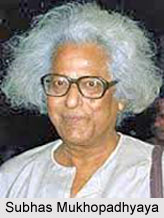 Development of Bengali poetry in the twentieth century is spread over the works of the older post-Kallol group of writers and a new crop of younger poets. Among the older generation was Subhas Mukhopadhyaya (1919), the former champion of Marxist politics among Bengali poets. His important collections are Padatik (Foot Soldier, 1940), Jata Durei Jai (As Far As I Wander, 1962), Kal Madhumas (It`s Spring Tomorrow, 1966), and Ei Bhai (Hey Brother, 1970). Arun Mitra (1909) was the other senior poet. His major books include Prantarekha (The Borderline, 1943), Mancher Baire (Off-Stage, 1970), and Sudhu Rater Sabda Nay (Not Just the Sound of the Night, 1978). Other poets of the same generation are Magalacharan Chattopadhyaya (1920), Birendra Chattopadhyaya (1919-87), Naresh Guha (1921), Jagannath Chakrabarti (1924-89), Ram Basu (1925), Sukanta Bhattacharya (1926-47), the talented poet who died very young, and, Binay Majumdar (Phire Eso, Caka (Come Back, Caka) 1962).
Development of Bengali poetry in the twentieth century is spread over the works of the older post-Kallol group of writers and a new crop of younger poets. Among the older generation was Subhas Mukhopadhyaya (1919), the former champion of Marxist politics among Bengali poets. His important collections are Padatik (Foot Soldier, 1940), Jata Durei Jai (As Far As I Wander, 1962), Kal Madhumas (It`s Spring Tomorrow, 1966), and Ei Bhai (Hey Brother, 1970). Arun Mitra (1909) was the other senior poet. His major books include Prantarekha (The Borderline, 1943), Mancher Baire (Off-Stage, 1970), and Sudhu Rater Sabda Nay (Not Just the Sound of the Night, 1978). Other poets of the same generation are Magalacharan Chattopadhyaya (1920), Birendra Chattopadhyaya (1919-87), Naresh Guha (1921), Jagannath Chakrabarti (1924-89), Ram Basu (1925), Sukanta Bhattacharya (1926-47), the talented poet who died very young, and, Binay Majumdar (Phire Eso, Caka (Come Back, Caka) 1962).
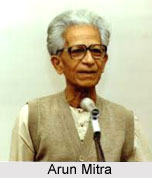 Sankha Ghosh (1932) rose to prominence as a poet from the late 1960s, although he was writing since the mid-1950s. Today, he is regarded as one of the greatest poets to be writing in the Bengali language and continues to exert an abiding influence on the younger generation of poets. His undisguised anti-authoritarian stance and the pure, brief quality of his poetry, its economy of expression, have made him one of the most respected poets in contemporary Bengali literature. Ghosh`s important collections are Dinguli Ratguli (Days and Nights, 1956), Murkha Baro, Samajik Nay (A Fool He Is, Not Social, 1974), Tumi To Teman Gauri Nao (You Are Not the Gauri I Thought You Were, 1978), Panjare Dathrer Sabda (Sound of Oars in the Ribs, 1980), and Mukh Dheke Jay Bijnapane (Advertisements Cover the Face, 1984). Sankha Ghosh has also written essays and books on aesthetics and literature and is a revered scholar on Rabindranath Tagore, besides being an acclaimed translator of poems and plays.
Sankha Ghosh (1932) rose to prominence as a poet from the late 1960s, although he was writing since the mid-1950s. Today, he is regarded as one of the greatest poets to be writing in the Bengali language and continues to exert an abiding influence on the younger generation of poets. His undisguised anti-authoritarian stance and the pure, brief quality of his poetry, its economy of expression, have made him one of the most respected poets in contemporary Bengali literature. Ghosh`s important collections are Dinguli Ratguli (Days and Nights, 1956), Murkha Baro, Samajik Nay (A Fool He Is, Not Social, 1974), Tumi To Teman Gauri Nao (You Are Not the Gauri I Thought You Were, 1978), Panjare Dathrer Sabda (Sound of Oars in the Ribs, 1980), and Mukh Dheke Jay Bijnapane (Advertisements Cover the Face, 1984). Sankha Ghosh has also written essays and books on aesthetics and literature and is a revered scholar on Rabindranath Tagore, besides being an acclaimed translator of poems and plays.
One of the foremost poets to have emerged in the post-Jibananda era is Sakti Chattopadhyaya (1934). His is a unique writing style comprising adventurous experiments with language, style, and complexity of images.
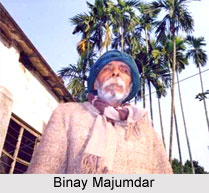 Some of his major works are Dharmeo Acho Jirapheo Ache (In Religion, in Giraffes Too, 1972), Hemanter Aranye Ami Postmyan (Postman in the Autumnal Forest, 1977), Manus Darun Kandche (Mankind Is Weeping Too Much, 1978), and Jete Pari Kintu Kena Jabo? (I Can Go, But Why Should I?, 1982). The other senior poet of the earlier generation is Narendranath Chakrabarti (1924), whose major works are collected in Andhakar Baranda (The Dark Veranda, 1954), Kolkatar Jisu (The Christ of Calcutta, 1970), and Ulanga Raja (The Emperor`s Clothes, 1971). Chakrabarti has also been the editor of Anandamela, a leading magazine for children. Sunil Gangopadhyay, though mainly a prose writer, has also contributed immensely towards poetry. His important poetic works include Bandi Jege Acho?(Prisoner, Are You Awake?, 1969), Hathat Nirar Janye (Suddenly for Nira, 1978), and Sonar Mukut Theke (From the Golden Crown, 1982).
Some of his major works are Dharmeo Acho Jirapheo Ache (In Religion, in Giraffes Too, 1972), Hemanter Aranye Ami Postmyan (Postman in the Autumnal Forest, 1977), Manus Darun Kandche (Mankind Is Weeping Too Much, 1978), and Jete Pari Kintu Kena Jabo? (I Can Go, But Why Should I?, 1982). The other senior poet of the earlier generation is Narendranath Chakrabarti (1924), whose major works are collected in Andhakar Baranda (The Dark Veranda, 1954), Kolkatar Jisu (The Christ of Calcutta, 1970), and Ulanga Raja (The Emperor`s Clothes, 1971). Chakrabarti has also been the editor of Anandamela, a leading magazine for children. Sunil Gangopadhyay, though mainly a prose writer, has also contributed immensely towards poetry. His important poetic works include Bandi Jege Acho?(Prisoner, Are You Awake?, 1969), Hathat Nirar Janye (Suddenly for Nira, 1978), and Sonar Mukut Theke (From the Golden Crown, 1982).
Special mention needs to be made here of their biweekly cultural journal, Desh (published by the Ananda Bazar Group), which has been a major outlet for poets and prose writers in Bengal ever since it was founded in the 1930s.
There are a number of important writers who started their careers in the late 1960`s or 1970`s. Chief among them are Alokranjan Dasgupta (1933), Tarapada Ray (1936), Amitabha Dasgupta (1935), Pranabendu Dasgupta (1937), Samsul Haq, Kabirul Islam, Pumendu Patri, Samarendra Sengupta,
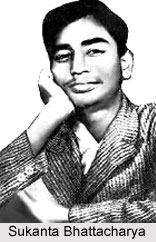 Sunil Basu, Saratkumar Mukhopadhyaya, Buddhadeb Dasgupta, Asis Sanyal, Siddheswar Sen (1926), Ratneswar Hajra, Manibhusan Bhattacharya, Partha Pratim Kanjilal, and Bhaskar Chakrabarti. Among the leading women poets from the same generation are Kabita Sinha (1931), Sadhana Mukhopadhyaya, Bijaya Mukhopadhyaya, Debarati Mitra, Ketaki Kusari-Dyson (1940), and Nabanita Deb-Sen (1938). Kusari-Dyson and Deb-Sen (see earlier) are also prose writers and scholars of renown.
Sunil Basu, Saratkumar Mukhopadhyaya, Buddhadeb Dasgupta, Asis Sanyal, Siddheswar Sen (1926), Ratneswar Hajra, Manibhusan Bhattacharya, Partha Pratim Kanjilal, and Bhaskar Chakrabarti. Among the leading women poets from the same generation are Kabita Sinha (1931), Sadhana Mukhopadhyaya, Bijaya Mukhopadhyaya, Debarati Mitra, Ketaki Kusari-Dyson (1940), and Nabanita Deb-Sen (1938). Kusari-Dyson and Deb-Sen (see earlier) are also prose writers and scholars of renown.
In the group of younger poets in the field of Bengali literature is Joy Goswami(1954). He has earned a revered place in Bengali poetry with his writing style. Seen in his works is a daring and commanding play with words and brave infusion of everyday Kolkata street language into poetry. His poems are full of a lively and unusual metaphysical imagery. Among his major works to date are Pratnajib (Archaic Organism, 1978), Unmader Pathakram (Syllabi for the Deranged, 1986), Bhutum Bhagaban (Bhutum, the God, 1988), and Ghumiecho Jhaupata? (Asleep Are You, Fern Leaf?,1989). Besides Goswami, two other poets who have been using a postmodernist diction in Bengali poetry are Aryan Sen and Amitabha Gupta. Other younger poets include Jaideb Basu, Mridul Dasgupta, Partha Pratim Kanjilal, Mahua Chaudhuri, Bhaskar Chakrabarti, and Soumya Dasgupta.
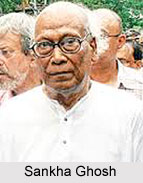 It may be mentioned here that many of the mentioned new-generation poets of West Bengal have consciously chosen not to publish their works with the Ananda Bazar Group publications, which they feel have monopolized the literary scene and try to regulate the direction of Bengali literature according to vested political interests. Instead, these poets have gone to the numerous little magazines published in and around Kolkata, the leading ones among which are Anustup, Prama, Parichay, Jijnasa, Kourab, and Kabitirtha. These magazines are also the main outlet for non-fictional prose writing in Bengali before their appearance in the book form.
It may be mentioned here that many of the mentioned new-generation poets of West Bengal have consciously chosen not to publish their works with the Ananda Bazar Group publications, which they feel have monopolized the literary scene and try to regulate the direction of Bengali literature according to vested political interests. Instead, these poets have gone to the numerous little magazines published in and around Kolkata, the leading ones among which are Anustup, Prama, Parichay, Jijnasa, Kourab, and Kabitirtha. These magazines are also the main outlet for non-fictional prose writing in Bengali before their appearance in the book form.
Thus, the development of Bengali poetry in Twentieth century includes the work of the older generation as well as the younger generation writers.













